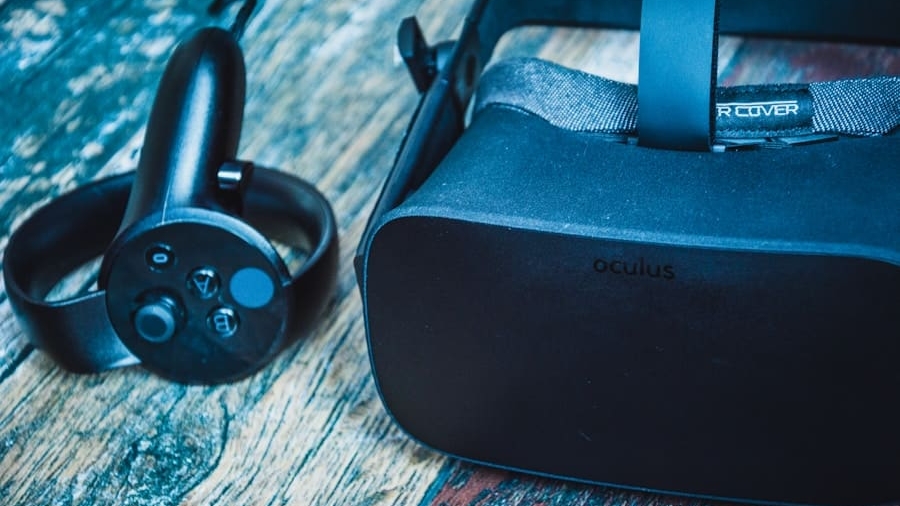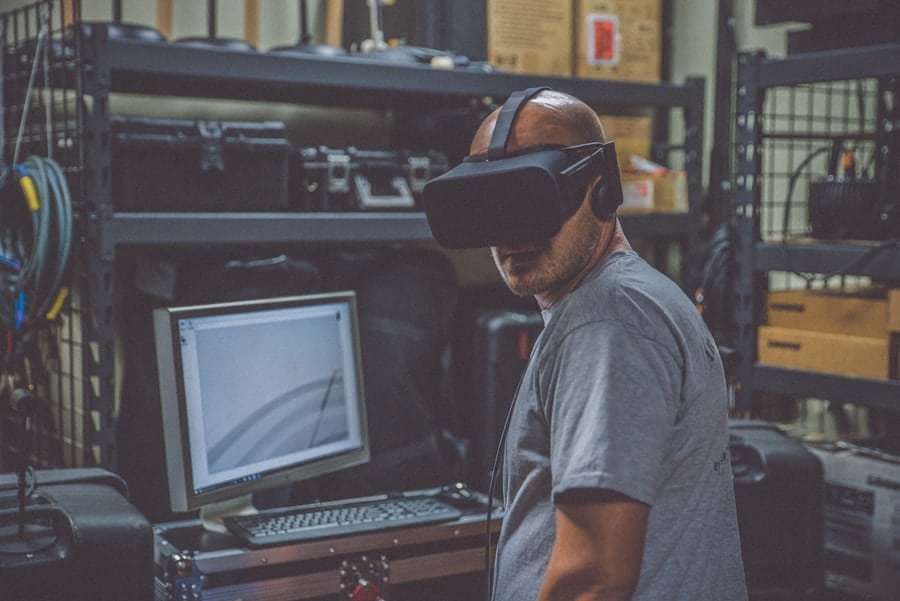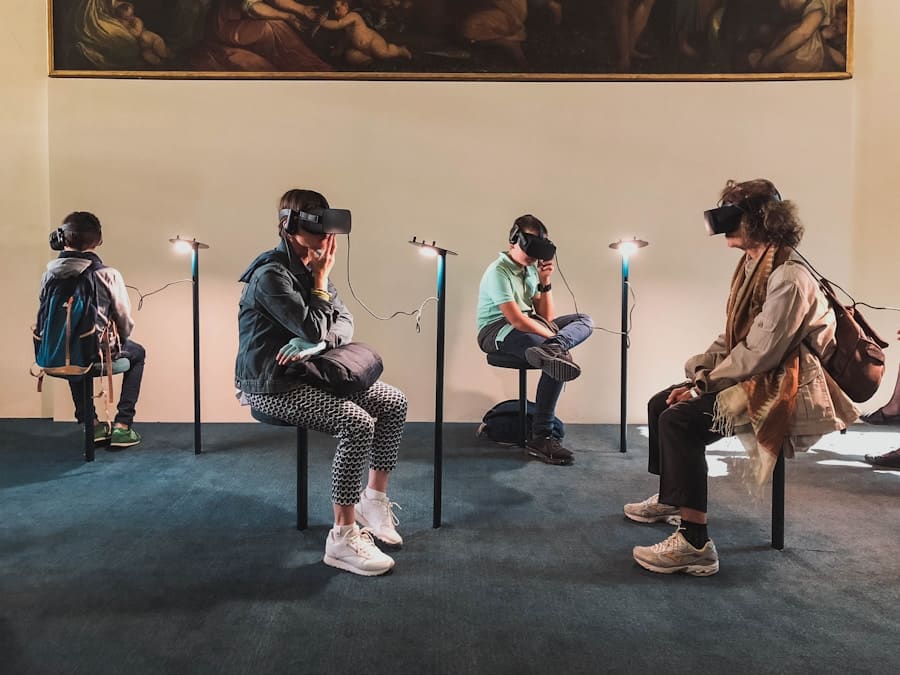Virtual Reality (VR) has emerged as a transformative technology in various sectors, particularly in career training. By immersing users in a simulated environment, VR allows individuals to engage in realistic scenarios that mimic the challenges they may face in their respective fields. This technology is particularly beneficial for high-stress jobs, where the stakes are high, and the margin for error is minimal.
Industries such as healthcare, aviation, law enforcement, and emergency services have begun to adopt VR training programs to enhance the preparedness and resilience of their workforce. The integration of VR into career training is not merely a trend; it represents a paradigm shift in how skills are developed and refined. Traditional training methods often rely on theoretical knowledge and passive learning, which may not adequately prepare individuals for the complexities of real-world situations.
In contrast, VR provides an interactive platform where trainees can practice decision-making, problem-solving, and critical thinking in a safe yet realistic environment. This immersive experience fosters deeper learning and retention, making it an invaluable tool for preparing individuals for high-pressure roles.
Key Takeaways
- VR technology is revolutionizing career training by providing immersive and interactive experiences for high-stress job training.
- The benefits of VR for high-stress job training include realistic simulations, safe learning environments, increased engagement, and improved retention of information.
- Case studies have shown successful integration of VR in high-stress job training, such as in healthcare, military, and aviation industries.
- Challenges and limitations of VR in career training include high costs, technical issues, and the need for ongoing content development and updates.
- Ethical considerations in VR training for high-stress jobs include ensuring the well-being and mental health of trainees, as well as addressing potential desensitization to stressful situations.
Benefits of VR for High-Stress Job Training
One of the most significant advantages of VR in high-stress job training is its ability to simulate high-pressure scenarios without the associated risks. For instance, medical professionals can practice surgical procedures or emergency response techniques in a controlled environment, allowing them to hone their skills without jeopardizing patient safety. This risk-free setting enables trainees to make mistakes and learn from them, ultimately leading to improved performance when they encounter similar situations in real life.
Moreover, VR training can be tailored to meet the specific needs of different professions. For example, law enforcement officers can engage in virtual simulations that replicate high-stakes situations such as hostage negotiations or active shooter scenarios. These tailored experiences not only enhance the relevance of the training but also allow for repeated practice until proficiency is achieved.
The ability to customize scenarios ensures that trainees are better prepared for the unique challenges they will face in their careers. Another notable benefit of VR training is its capacity to enhance emotional resilience. High-stress jobs often require individuals to manage their emotions effectively while making critical decisions under pressure.
VR can simulate stressful situations that evoke emotional responses, allowing trainees to practice coping strategies and decision-making processes in real time. This exposure helps build emotional intelligence and resilience, equipping individuals with the tools they need to navigate high-pressure environments successfully.
Case Studies of VR Integration in High-Stress Job Training
Several organizations have successfully integrated VR into their training programs, demonstrating its effectiveness in preparing employees for high-stress roles. One prominent example is the use of VR in medical training at institutions like Stanford University. The Stanford School of Medicine has developed a VR platform that allows medical students to practice surgical techniques and patient interactions in a lifelike environment.
Trainees can perform procedures on virtual patients, receiving immediate feedback on their performance. This innovative approach has been shown to improve surgical skills and confidence among students, ultimately leading to better patient outcomes. In the aviation industry, companies like Boeing have adopted VR technology to train pilots and ground crew members.
Boeing’s VR training program immerses trainees in realistic flight simulations that replicate various scenarios, including emergency landings and equipment malfunctions. By experiencing these situations virtually, pilots can develop critical skills and decision-making abilities without the risks associated with real flights. The effectiveness of this training has led to a reduction in errors and improved safety records within the aviation sector.
Another compelling case study comes from the military, where VR has been utilized for combat training. The U.S. Army has implemented VR simulations that allow soldiers to engage in realistic combat scenarios, enhancing their tactical skills and situational awareness.
These simulations provide soldiers with opportunities to practice teamwork and communication under pressure, which are essential skills in high-stress environments. The Army’s use of VR has resulted in more effective training outcomes and increased readiness for deployment.
Challenges and Limitations of VR in Career Training
Despite its numerous advantages, the implementation of VR in career training is not without challenges. One significant limitation is the cost associated with developing and maintaining VR training programs. High-quality VR simulations require substantial investment in technology, software development, and ongoing updates to ensure relevance and effectiveness.
Additionally, there are technical challenges related to the hardware and software used in VR training. Not all trainees may have access to the necessary equipment or possess the technical skills required to navigate VR environments effectively.
This digital divide can create disparities in training opportunities, potentially leaving some individuals at a disadvantage. Furthermore, issues such as motion sickness or discomfort while using VR headsets can hinder the learning experience for some users. Another challenge lies in the need for proper integration of VR training into existing curricula or training programs.
Organizations must ensure that VR complements traditional training methods rather than replacing them entirely. Striking this balance requires careful planning and collaboration among stakeholders to create a cohesive training strategy that maximizes the benefits of both approaches.
Ethical Considerations in VR Training for High-Stress Jobs
The use of VR in high-stress job training raises several ethical considerations that must be addressed to ensure responsible implementation. One primary concern is the potential for desensitization among trainees who repeatedly engage with violent or traumatic scenarios. For instance, law enforcement officers who train extensively with VR simulations involving high-stakes confrontations may become desensitized to violence over time.
This desensitization could impact their behavior in real-life situations, leading to unintended consequences. Moreover, there are questions surrounding informed consent and psychological safety when using VR for training purposes. Trainees should be fully aware of what they will experience during simulations and have the option to opt out if they feel uncomfortable.
Organizations must prioritize mental health and well-being by providing support systems for individuals who may struggle with the emotional impact of immersive training experiences. Data privacy is another critical ethical consideration when implementing VR training programs. Many VR systems collect data on user performance and behavior during simulations, raising concerns about how this data is stored, used, and shared.
Future Trends and Developments in VR Career Training
As technology continues to evolve, the future of VR in career training looks promising. One emerging trend is the integration of artificial intelligence (AI) with VR systems to create more adaptive and personalized training experiences. AI algorithms can analyze trainee performance data in real time, adjusting scenarios based on individual strengths and weaknesses.
This level of customization could lead to more effective learning outcomes and greater engagement among trainees. Another trend is the increasing accessibility of VR technology. As hardware becomes more affordable and user-friendly, organizations of all sizes will have the opportunity to implement VR training programs.
Additionally, advancements in cloud computing may enable remote access to VR simulations, allowing trainees to engage with immersive experiences from anywhere in the world. The development of social VR platforms is also gaining traction, enabling collaborative training experiences where multiple users can interact within a shared virtual environment. This approach fosters teamwork and communication skills essential for high-stress jobs that require collaboration among team members.
Tips for Implementing VR in High-Stress Job Training Programs
To successfully implement VR in high-stress job training programs, organizations should consider several key strategies. First and foremost, conducting a thorough needs assessment is crucial to identify specific training objectives and determine how VR can best address those needs. Engaging stakeholders from various departments can provide valuable insights into the unique challenges faced by employees in high-stress roles.
Investing in high-quality content development is essential for creating effective VR simulations that accurately reflect real-world scenarios. Collaborating with subject matter experts ensures that training materials are relevant and aligned with industry standards. Additionally, organizations should prioritize user experience by selecting intuitive interfaces and minimizing technical barriers that could hinder engagement.
Providing adequate support and resources for trainees is vital for maximizing the benefits of VR training. This includes offering orientation sessions to familiarize users with the technology and providing ongoing access to mental health resources for those who may experience emotional challenges during simulations. Finally, organizations should continuously evaluate the effectiveness of their VR training programs through feedback mechanisms and performance assessments.
Regularly updating content based on user input and industry advancements will help maintain relevance and ensure that trainees receive the best possible preparation for their high-stress roles.
The Impact of VR on Career Training for High-Stress Jobs
The integration of Virtual Reality into career training represents a significant advancement in preparing individuals for high-stress jobs across various industries. By providing immersive experiences that simulate real-world challenges, VR enhances skill development, emotional resilience, and decision-making capabilities among trainees. While there are challenges associated with implementation and ethical considerations that must be addressed, the potential benefits far outweigh these obstacles.
As technology continues to evolve, organizations have an opportunity to leverage VR as a powerful tool for workforce development. By embracing this innovative approach to training, employers can equip their employees with the skills necessary to thrive in demanding environments while fostering a culture of continuous learning and improvement. The future of career training is undoubtedly intertwined with advancements in virtual reality technology, paving the way for more effective and engaging learning experiences that prepare individuals for success in high-stress roles.
If you are interested in exploring innovative tools for education and training, you may also want to check out The Best Tablets for Students in 2023. This article provides insights into the top tablets that can enhance the learning experience for students of all ages. Additionally, if you are looking for software solutions to improve your design skills, you can read Best Software for Newspaper Design: Top Picks for Professional Layouts. This resource offers recommendations for software that can help you create visually appealing layouts for newspapers and other publications.
FAQs
What is VR?
VR stands for virtual reality, which is a computer-generated simulation of an environment that can be interacted with in a seemingly real or physical way by a person using special electronic equipment, such as a helmet with a screen inside or gloves fitted with sensors.
How does VR support immersive career training for high-stress jobs?
VR provides a realistic and immersive training environment for high-stress jobs, allowing trainees to experience and practice scenarios in a safe and controlled setting. This can help them develop the necessary skills and confidence to perform effectively in real-life high-stress situations.
What are some examples of high-stress jobs that can benefit from VR training?
High-stress jobs such as military personnel, first responders (police, firefighters, paramedics), medical professionals (surgeons, emergency room staff), pilots, and air traffic controllers can benefit from VR training to simulate and prepare for high-pressure situations.
What are the advantages of using VR for career training in high-stress jobs?
VR allows trainees to repeatedly practice and refine their skills in realistic scenarios without the risk of harm to themselves or others. It also provides a cost-effective and scalable training solution, as well as the ability to track and assess trainee performance and progress.
Are there any limitations to using VR for career training in high-stress jobs?
While VR can provide a highly immersive training experience, it may not fully replicate the physical and emotional stress of real-life high-stress situations. Additionally, the cost of VR equipment and development of training programs can be a barrier for some organizations.



